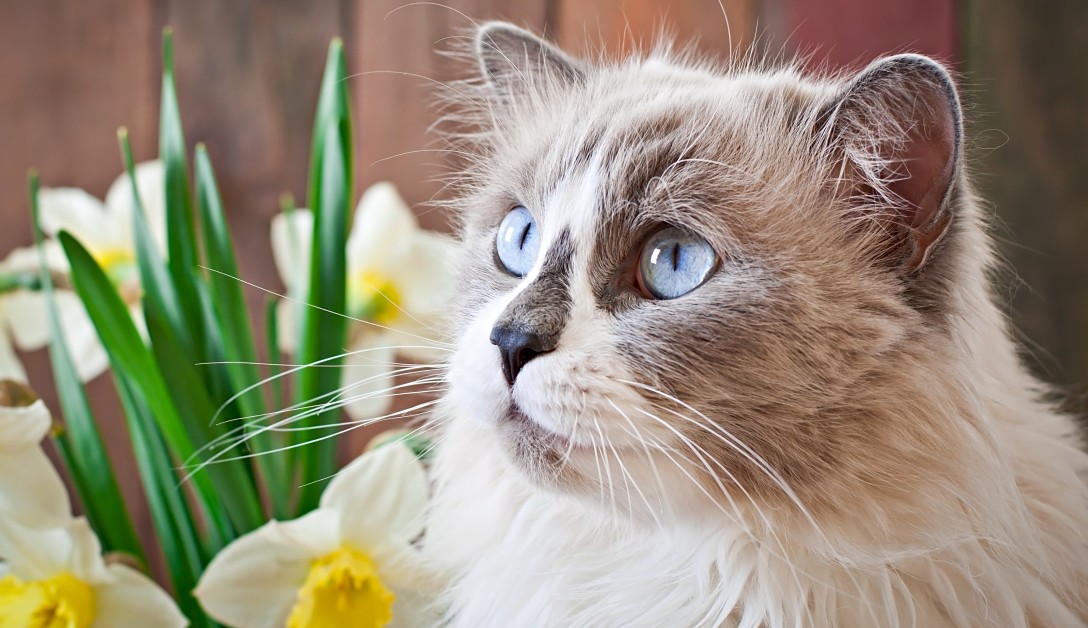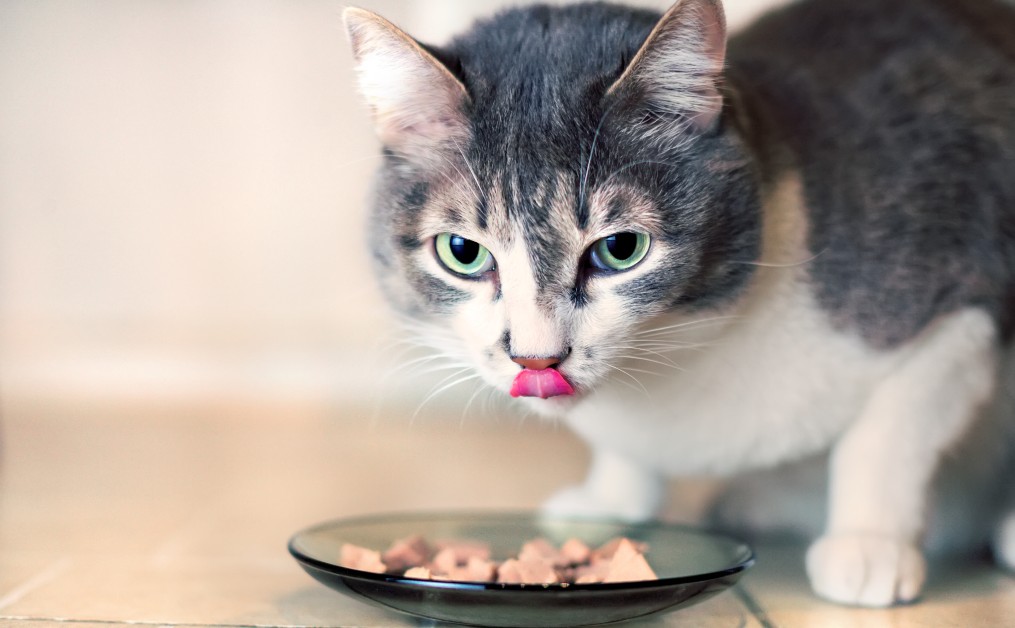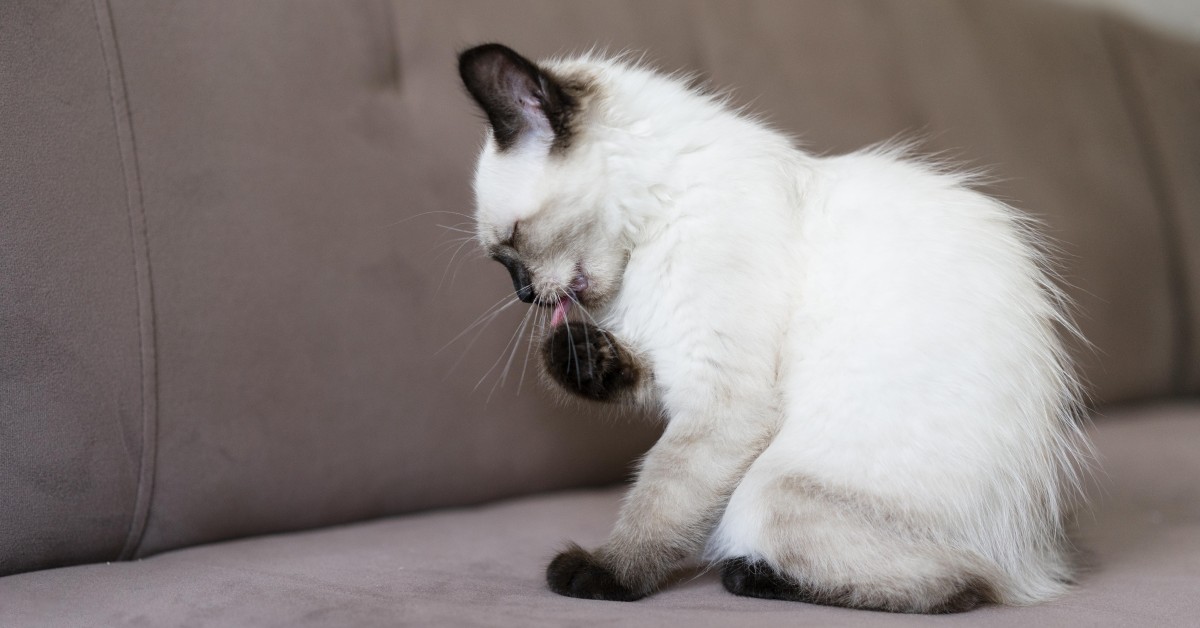Meet the Ragdoll: Your Floppy Feline Friend
Learn how to care for the flexible bundle of joy known as the ragdoll cat.

If you love dogs but you feel that you're ready to adopt a cat, the ragdoll makes a perfect choice. This affectionate, laid-back, "dog-like" breed of cat is so relaxed that it may go limp in your arms when you pick it up. However, like any animal, the Ragdoll has its unique preferences, needs, and care requirements. Let's take a look at this favorite of the feline world, from its history and traits to common medical concerns.
Ragdoll History and Characteristics
It might surprise you to learn just what a recent breed the ragdoll cat is. A California breeder named Ann Baker originated the breed in the 1960s by crossing a longhaired cat with other cats over several generations. By 1993, the Ragdoll breed had been registered by the Cat Fanciers Association, and its popularity has only increased since then.
The Ragdoll easily qualifies as one of the most tranquil, tolerant, and relaxed of all cat breeds. It gets its name from the fact that it often relaxes so completely in the hands of its owner that it seems to go all floppy. Ragdolls also display more loyalty and affection to their owners than some other breeds, following their masters around like a dog and getting upset when their master disappears for extended periods. (Consider this point before adopting a ragdoll if you're often away from home.)
For such a peaceful cat, the Ragdoll presents an imposing picture. These cats can grow close to a foot long, with males typically weighing 15 to 20 pounds in adulthood. Their long, thick hair makes them appear even larger than they really are. Ragdolls come in a variety of coat colors and patterns, from cream red to lilac, blue, seal and chocolate, while sporting a brilliant pair of blue eyes.
Ragdoll Diet and Nutrition
A big cat usually has a big appetite, and ragdolls are no exception to the rule. Unfortunately, this tendency can cause them to pack on excess pounds if you let them eat whatever they want, especially if they don't get regular exercise. Bring your ragdoll to the veterinarian to discuss how much it should be eating each day for its size and age. Measure each meal portion carefully to prevent overfeeding, including any treats within the daily calorie count.
Like all cats, Ragdoll cats are carnivores that get their essential nutrients from meat. Feeding your ragdoll wet food not only gives them the meat they need; it also serves as a useful water source, helping to keep your kitty optimally hydrated.
Ragdoll Grooming Needs
Grooming is another key factor in Ragdoll care. Interestingly enough, all that extra hair doesn't necessarily mean that your cat will be a shedding monster. Unlike some longhaired breeds, ragdolls don’t generally have an undercoat of fur, meaning that you won't have to pull mounds of hair off your pet on a regular basis.
That said, the long, silky hair of a ragdoll does require some attention to keep it looking nice and to prevent painful, unsightly tangles and mats. Twice-weekly brushing should accomplish this task nicely. Don't forget to trim your ragdoll's nails periodically and brush its teeth regularly (using a cat-friendly toothpaste) as part of a healthy grooming routine.
Exercise for Your Ragdoll
Ragdolls love to play just as much as other cat breeds. Your Ragdoll may get hours of enjoyment out of standard balls, bottle caps, and other popular cat toys. However, it's best if you can join in the fun by teasing your kitty with a feather on the end of a fishing line or other interactive games. The more you can get your ragdoll moving, the more calories it will burn and the more easily you can keep its weight at a healthy level.
Mental exercise is also important for Ragdolls. Puzzle feeders and other intellectually stimulating toys can keep your cat's mind engaged and appeal to its natural curiosity. A bored cat is less likely to get into trouble!
Ragdoll Health Risks and Considerations
Ragdolls tend to enjoy robust health as a general rule, but they can fall prey to the same health issues as other felines, as well as a few that may prove especially troublesome. For instance, as a large breed they may prove vulnerable to arthritis from joint wear. As noted above, the combination of a good appetite with a moderate energy level can make them prone to obesity, a condition with serious medical consequences.
Bladder stones pose another concern for Ragdoll owners. This breed can develop mineral deposits that interfere painfully with normal urination. If your Ragdoll displays painful and/or reduced urination, schedule an exam and necessary treatment, which typically includes a prescription diet with plenty of water.
Ragdolls are predisposed to a heart condition called hypertrophic cardiomyopathy, or HCM. If your cat develops this condition, it may experience trouble breathing, lose its appetite, and act lethargic. Your veterinarian may prescribe a low-sodium diet and other treatment methods to help your cat cope with the disorder.
Some Ragdoll cats have trouble with allergies. Both environmental allergens and food allergens can create symptoms such as itching, skin lesions, and coat changes. If you notice these issues, find out whether your cat is allergic to a particular substance. Between your efforts and those of your veterinarian, your Ragdoll will enjoy flopping its way through many more happy, relaxed years!
Ready to start saving money on pet wellness care?
Then take a look at Mint Wellness, the pet wellness plan that provides fast reimbursement on routine pet care. Save on vaccinations, wellness exams, preventatives, dental, and more!
Learn More


